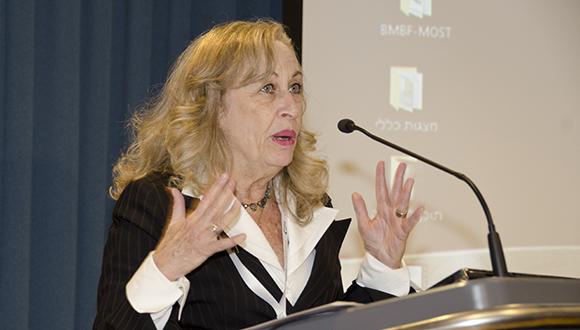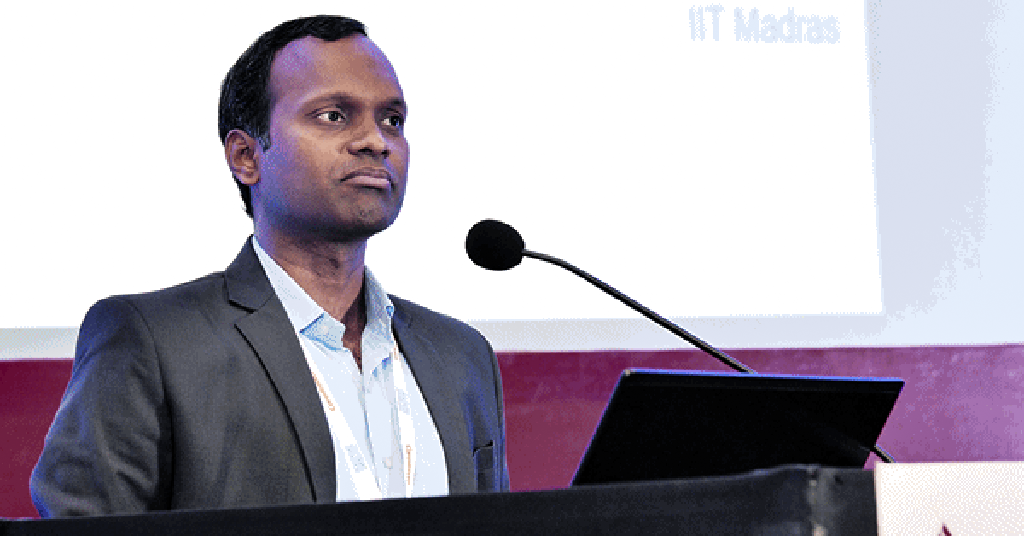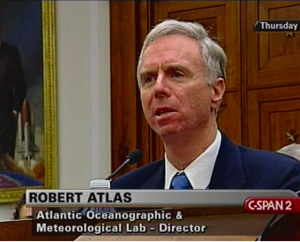MODELING AND SIMULATION FOR REDUCING THE RISKS ASSOCIATED WITH EXTREME WEATHER
Dr. ROBERT ATLAS
Research Professor and Global Coordinator for CARTA, University of Maryland Baltimore County and
Director Emeritus/ NOAA Atlantic Oceanographic and Meteorological Laboratory
TIME: 11:00am – 12:30pm, February 10,2021 @WEBEX
The reduction of losses related to hurricanes and other extreme weather phenomena involves many complex aspects ranging from purely theoretical, observational, computational and numerical, to operational and decisional. A correct warning can lead to proper evacuation and damage mitigation, and produce immense benefits. However, over-warning can lead to substantial unnecessary costs, a reduction of confidence in warnings, and a lack of appropriate response. In this chain of information, the role played by scientific research is crucial. The National Oceanic and Atmospheric Administration (NOAA), in combination with the National Aeronautics and Space Administration (NASA), other agencies, and universities is contributing to these efforts through observational and theoretical research to better understand the processes associated with extreme weather. This includes model and data assimilation development, Observing System Experiments (OSE), and Observing System Simulation Experiments (OSSE) designed to ascertain the value of existing observing systems and the potential of new observing systems to improve weather prediction and theoretical understanding. This high-level talk, which was first given as the Keynote address at the 2019 Winter Simulation Conference, will describe innovative research for developing advanced next-generation global and regional models to improve weather prediction, and the application of OSSEs to optimize the observing system.
Dr. Robert Atlas is the former Chief Meteorologist at NASA’s Goddard Laboratory for Atmospheres, and is Director Emeritus of the National Oceanic and Atmospheric Administration’s (NOAA) Atlantic Oceanographic and Meteorological Laboratory in Miami, Fla. Some of the areas he focused his research on included the prediction, movement and strengthening of hurricanes. He has worked with both satellite data and computer models as a means to study these hurricane behaviors.
Dr. Atlas received his Ph.D. in Meteorology and Oceanography in 1976 from New York University. Prior to receiving the doctorate, he was a weather forecaster in the U.S. Air Force where he maintained greater than 95 percent forecast accuracy. From 1976 to 1978, Dr. Atlas was a National Research Council Research Associate at NASA’s Goddard Institute for Space Studies, New York, an Assistant Professor of Atmospheric and Oceanic Science for SUNY and Chief Consulting Meteorologist for the ABC television network.
In 1978, Dr. Atlas joined NASA as a research scientist. He served as head of the NASA Data Assimilation Office from 1998-2003, and as Chief meteorologist at NASA GSFC from 2003-2005. Dr. Atlas has performed research to assess and improve the impact of satellite data on numerical weather prediction since 1973. He was a key member of the team that first demonstrated the significant impact of quantitative satellite data on numerical weather prediction and is the world’s leading expert on Observing System Simulation Experiments, a technology that enables scientists to determine the quantitative value of new observing systems before funds are allocated for their development.
He served as a member of the Satellite Surface Stress Working Group, the NASA Scatterometer (NSCAT) Science Team, the ERS Science Team, the SeaWinds Satellite Team, the Working Group for Space-based Laser Winds, the Scientific Steering Group for GEWEX, the Council of the American Meteorological Society, and as Chairman of the U.S. World Ocean Circulation Experiment (WOCE) Advisory Group for model-based air-sea fluxes. He is currently a member of the Science Teams for two NASA space missions.
From 1974-1976, he developed a global upper-ocean model and studied oceanic response to atmospheric wind forcing as well as large-scale atmospheric response to sea surface temperature (SST) anomalies (unusual events). In more recent years, his research concentrated on the role of how the air and sea interacts in the development of cyclones, the role of soil moisture and unusual SST events in the initiation, maintenance and decay of prolonged heat waves and drought, and most recently on the modeling and prediction of hurricane formation, movement and intensification.
He is a recipient of the NASA Medal for Exceptional Scientific Achievement, and the American Meteorological Society’s Banner I. Miller Award. In 2019, just prior to his retirement from NOAA, he was honored by the National Hurricane Center for Enduring Contributions to the nation’s hurricane forecast and warning program, and by the U.S. House of Representatives for his service to the nation.
MEDICAL INFORMATICS– PROMISE AND BARRIERS TOWARDS PRECISE MEDICINE

Dr. MIRA MARCUS – KALISH
Director, International Research Affairs
Tel Aviv University
TIME: 10:00am – 12:00pm, November 23,2020
The challenging time, facing the pandemic, forced us to relate to the broadband picture of the Human being and his surrounding as one functioning system, across countries and continents. The need is to relate both, to the Micro (including in-body, physical, and mental conditions) and the Macro (such as environmental, cultural, and economical factors) providing a comprehensive understanding of the human body functioning in the surrounding, towards a precise, personalized “disease signature”, definition, especially these days. A systematic literature review on the “disease signature” term, revealed no clear definition. In many articles the “disease signature” phrase appears as a single biomarker (often –genetic), mainly related to neurology or oncology. (Stemmer, A. at All, 2019. Journal of Molecular Neuroscience, 67(4)). The major goal, is the unity of nature, science and technology, from the nanoscale towards converging knowledge and tools, at a confluence of disciplines, as was envisioned by the NSF in 2001 (NBIC) and further at the joint EU-US WTEC effort “Converging of Knowledge, Technology, Society”, Roco et al., Springer 2013.
The COVID-19 global health emergency, increased the need for early precise diagnosis and treatment, while facing major physical and mental threat and stress, such as Post Traumatic Stress Disorder (PTSD). These understandings reemphasized the need to join all forces, converge, verify and embed all knowledge, expertise and new advanced technologies, in the various disciplines. Furthermore, it enforced to verify the data originated by various sources, while bridging all cultural, conceptual, curation and technology barriers, preserving privacy and ethics regulations and ensuring reliable advanced analysis tools. All of the above to provide the profound insight on the human body and brain functioning in the surrounding as well as reliable “Disease Signature” , followed by suitable therapeutic treatment.
The question to be asked: Are we able to collect Big enough data, distributed and representative enough, while bridging all barriers as well as the accurate analysis tools, to
ensure reliable, replicable, reproducible outcome towards precise, personalized medicine? The Brain Medical Informatics Platform (MIP), developed by the EU Human Brain
Flagship Project, as part of the EBRAINS platform, is a key feasibility study along these lines. It involves broad clinical data collections from 30 hospitals, converging knowledge and data, embedding new technologies for data privacy, preservation and curation, as well as sophisticated analysis tools. The MIP and EBRAINS framework goal is to identify “BRAIN Disease Signatures” towards reliable medical treatment. A 3C – Categorize, Classify, Cluster Methodology, developed in our lab, is one of the tools available on the MIP. It incorporates expert medical knowledge and experience into the analysis process of disease manifestation and potential biomarkers, towards reliable
insights. The 3C approach was applied to the ADNI (Alzheimer’s disease Neuro Imaging) cohort, discovering association to new subtypes, which were later verified using the Rome Gemelli hospital labs clinical data. Other case studies were Parkinson Disease, genetic and biomarker research: (Tal Kozlovski, et al, 2019, Frontiers in Neurology, Movement Disorders) as well as PTSD research (Ben-Zion et al, 2020, Translational Psychiatry), both in collaboration with the Tel Aviv Medical Center.
Providing “Healthy Aging” to the elderly is a perfect example conceiving all, these days, as the elderly became one of the vulnerable groups at risk. The loneliness and isolation, forced by the current pandemic results in severe conditions including stress disorders and PTSD. Thus, an International “Healthy Aging” initiative, was established at TAU, promoting broad interdisciplinary research, combining knowledge and data analysis as well as advanced technologies, from most areas of science: including economics, art, social sciences, mental and physical health, lifestyle, engineering etc. All that to ensure the best fitted reliable treatment and a balanced quality of life to the elderly in general, and in these days, in particular.
Dr. Mira Marcus-Kalish is the Director of International Research Collaborations, at Tel Aviv University. Her main areas of research are mathematical modelling, converging technologies and data mining. Dr. Kalish holds a Ph.D. in Operations Research from the Technion, Israel Institute of Technology, where she developed one of the first
computerized systems for electrocardiogram (ECG) diagnosis. Her postdoctoral training was at Harvard University, the MBCRR (Molecular Biology Computer Research and Resource) laboratory and at the Dana Farber Cancer Institute. She was awarded her B.Sc. in Statistics and Biology from the Hebrew University of Jerusalem.
Impacting healthcare through collaborative technology innovations

Mohanasankar Sivaprakasam
Indian Institute of Technology, Madras, India
1:30-3:00pm Monday, 7 October 2019, ITE325, UMBC
India’s healthcare scenario presents a set of unique challenges to ensure effective delivery of care to the large population suffering from various communicable and non communicable diseases. The medical devices market in India is largely catered by imports, most of which were not designed to handle the constraints and requirements of country’s care delivery system and market. While this presents a significant challenge to established players, it is an exciting opportunity for innovators and entrepreneurs to create and scale indigenous technology solutions tailored to local needs. However, development of affordable technology solutions which create large impact, and can achieve scale in India requires a deep understanding of the care delivery system and strong partnerships with various stakeholders of the ecosystem.
Healthcare Technology Innovation Centre of IIT Madras focuses on developing and commercializing affordable healthcare technologies through its team of over 200 engineers, doctors, researchers, students and entrepreneurs working with more than 30 medical institutions, industries, government agencies. The talk will highlight some of its technology successes and the use of AI and machine learning in tackling the healthcare challenges. The potential of these technologies beyond Indian market will be discussed.
Mohanasankar Sivaprakasam is a faculty of Electrical Engineering at IIT Madras and Director of the Healthcare Technology Innovation Centre (HTIC), a R&D centre of IIT Madras. After his PhD and postdoctoral research in US in implantable medical devices for 8 years, he returned to India with goal of developing affordable medical technologies in the country. Since 2009, he has successfully built an ecosystem of technologists, clinicians and industry, culminating in setting up of Healthcare Technology Innovation Centre (HTIC) in 2011. Over the years, HTIC has grown into a unique and leading med-tech innovation ecosystem in the country bringing together more than 20 medical institutions, industry, government agencies, collaborating with HTIC in developing affordable medical technologies for unmet healthcare needs. He has more than 70 peer reviewed publications in journals and conferences.
